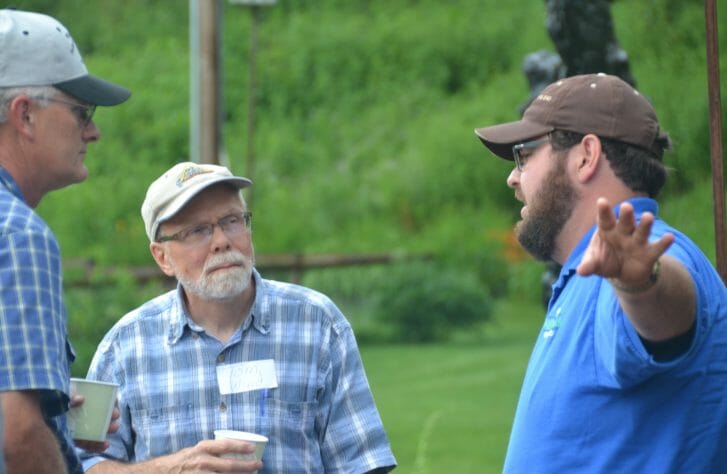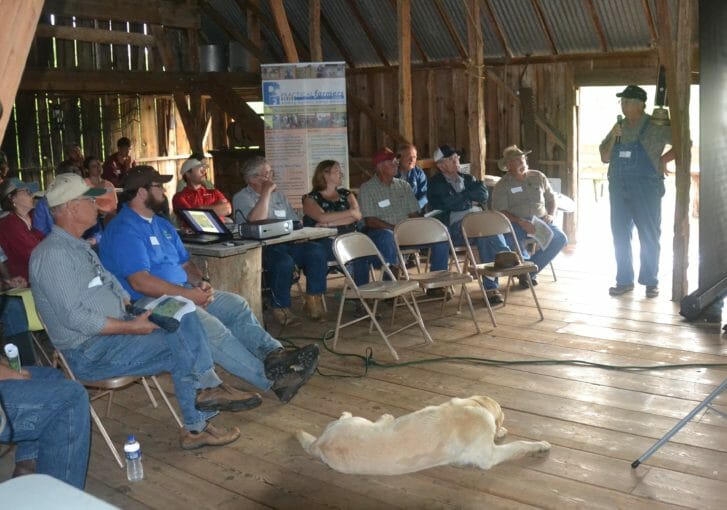Field Day Recap: Practical Talk on Pasture and Row Crop Farming, June 24
Despite rain and storms, 40 brave souls made their way to Whiterock Conservancy to learn about grazing and row crop systems. Darwin Pierce, the farm manager and Pat Corey,a local cattle farmer and resource conservationist for NRCS, discussed their collaborative arrangement. Pat grazes his cows on Whiterock’s pastures. The herd of cow/calf pairs is intensively managed – the cows are rotated every 2 to 3 days through the extensive paddock system, planned by NRCS.
Tony Seeman, from the Iowa Soybean Association, explained a water quality monitoring project measuring sediment, nitrate and phosphorous levels in water runoff from row crop fields. Tony is currently collecting data at Whiterock; the preliminary results show sediment levels are significantly lower where perennials have been planted. One thing to keep in mind when initially establishing grassy waterways or buffers – a rain storm can wash the planting away and you can end up with even more runoff than before, because soil has been disrupted by the planting.
Tim Youngquist, farmer liaison for the ISU Prairie STRIPS program gave an overview of the STRIPS project implemented at Whiterock. Native prairie was incorporated into row crops fields – totalling about 20% of the fields. The prairie was planted in areas that were undesirable to plant corn and beans – like low, wet spots and certain corners of fields. Rob Davis, Whiterock’s conservation lands manager, said that those areas were actually cost prohibitive to plant crops. Tim urges landowners and farmers to plant 10% of their land in prairie. Re-establishing prairie on this small amount of land has proven to greatly increase wildlife diversity and soil health while reducing soil erosion and runoff and minimally affecting crop yields.
The rains let up for 15 minutes and we were taken on a quick tour to view the grazing herd, row crop fields, and a water sampling station. Whiterock engages the public through outdoor recreation and education – so all of these innovative farming practices can be seen while hiking, biking or horseback riding on the 40 mile network of trails that snake through the 5,500 acre property.
To end the day, we were alerted of a tornado warning. Luckily, we were already eating dinner in the basement – which doubled as the tornado shelter. Nothing beats eating local pork and ice cream while weathering the storm! Thank you to the fabulous Whiterock staff for planning an excellent event and providing a dry barn so we could make the most of the rainy day.


